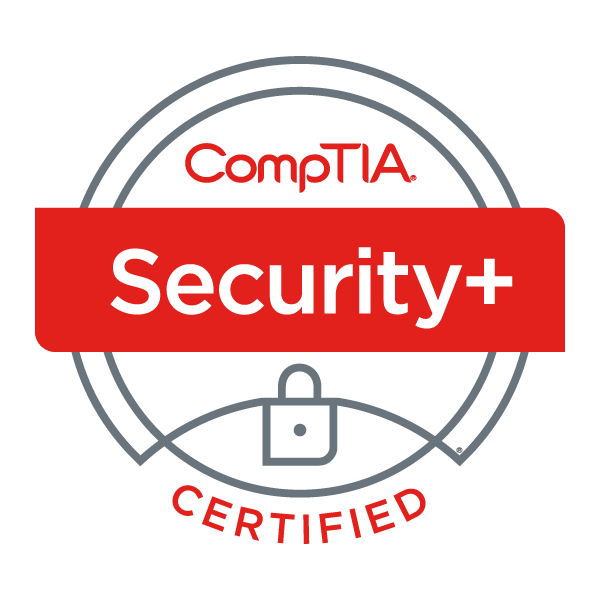SY0-701

| Formats: | Asynchronous |
| Blended | |
| Online | |
| Onsite | |
| Part-time | |
| Level: | Beginner |
| Prerequisites: | |
| Recommended Knowledge | |
| Familiarity with networking concepts | |
| Basic understanding of computer hardware, software and operating systems | |
| CompTIA A+ | |
| CompTIA N+ | |
Formats: We offer our training content in a flexible format to suit your needs. Contact Us if you wish to know if we can accommodate your unique requirements.
Level: We are happy to customize course content to suit your skill level and learning goals. Contact us for a customized learning path.
CompTIA Security+ (SY0-701)
The CompTIA Security+ exam will certify that the successful candidate has the knowledge and skills required to install and configure systems, secure applications, networks, and devices; perform threat analysis and respond with appropriate mitigation techniques.
A student who successfully completes this course can participate in risk mitigation activities; and operate with an awareness of applicable policies, laws, and regulations.
Course Objectives
Threats, Attacks, and Vulnerabilities
- Given a scenario, analyze indicators of compromise and determine the type of malware
- Compare and contrast types of attacks.
- Explain threat actor types and attributes.
- Explain penetration testing concepts
- Explain vulnerability scanning concepts
- Explain the impact associated with types of vulnerabilities
Technologies and Tools
- Install and configure network components, both hardware- and software-based, to support organizational security
- Given a scenario, use appropriate software tools to assess the security posture of an organization
- Given a scenario, troubleshoot common security issues
- Given a scenario, analyze and interpret output from security technologies
- Given a scenario, deploy mobile devices securely
- Given a scenario, implement secure protocols
Architecture and Design
- Explain use cases and purpose for frameworks, best practices and secure configuration guides
- Given a scenario, implement secure network architecture concepts
- Given a scenario, implement secure systems design
- Explain the importance of secure staging deployment concepts
- Explain the security implications of embedded systems
- Summarize secure application development and deployment concepts
- Summarize cloud and virtualization concepts
- Explain how resiliency and automation strategies reduce risk
- Explain the importance of physical security controls
Identity and Access Management
- Compare and contrast identity and access management concepts
- Given a scenario, install and configure identity and access services
- Given a scenario, implement identity and access management controls
- Given a scenario, differentiate common account management practices
- Risk Management
- Explain the importance of policies, plans, and procedures related to organizational security
- Summarize business impact analysis concepts
- Explain risk management processes and concepts
- Given a scenario, follow incident response procedures
- Summarize basic concepts of forensics
- Explain disaster recovery and continuity of operation concepts
- Compare and contrast various types of controls
- Given a scenario, carry out data security and privacy practices
Cryptography and PKI
- Compare and contrast basic concepts of cryptography
- Explain cryptography algorithms and their basic characteristics
- Given a scenario, install and configure wireless security settings
- Given a scenario, implement public key infrastructure